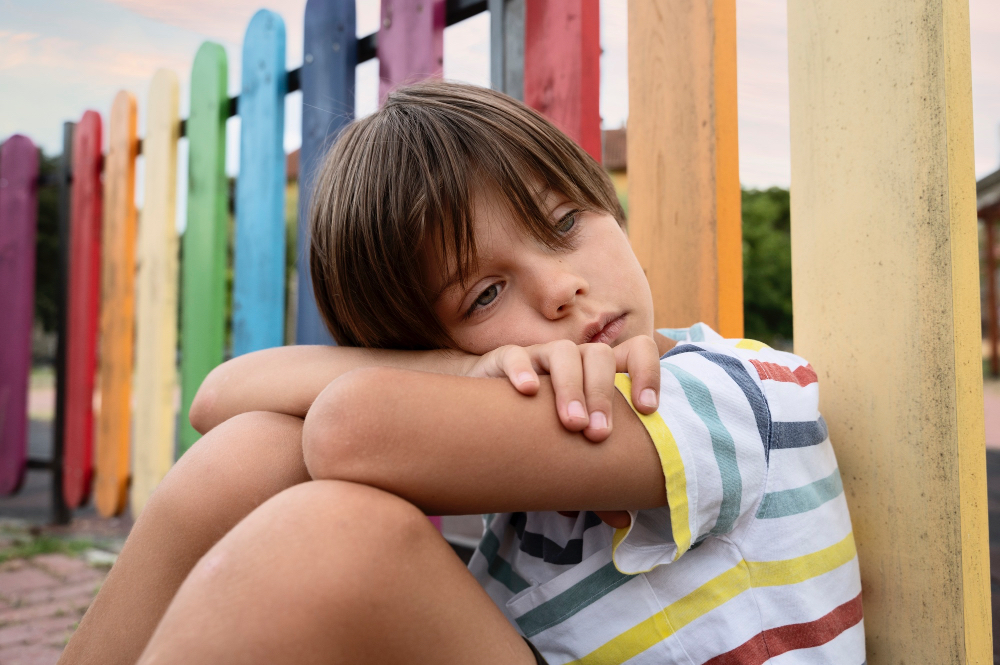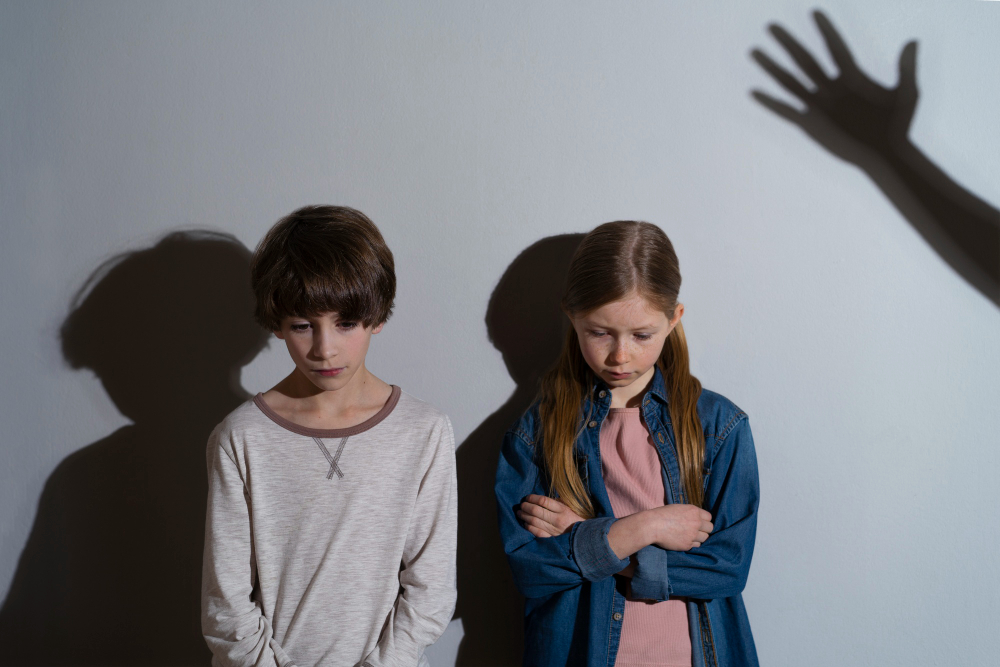In schools across British Columbia and beyond, discipline often unfolds not as a considered intervention tailored to individual needs, but as a blunt, collective act that seeks to restore order quickly by suspending joy or opportunity for all.
The cancellation of recess, the revocation of a field trip, the withholding of an earned privilege—all for the actions of one or a few—may appear, to the enforcer, as a simple way to command compliance. Yet beneath this surface simplicity lies a complex, corrosive harm. This harm touches every layer of student life, from motivation and trust to the fragile threads of community, and falls most heavily on those already living at the margins: disabled students, racialized students, those whose families sit outside the implicit norms of the institution.
-
Collective punishment: how schools displace guilt, erase harm, and preserve the collective
One of the things that was so traumatising about the collective punishment that was callously perpetrated against my daughter was the light and evasive tone of the principal. She said that the punishment had to be “swift.” I frequently wondered about the choice…
Regressive discipline as a continuation of punitive traditions
Collective punishment is far from a new phenomenon. Its lineage can be traced through military training, industrial labour discipline, and authoritarian governance. In the classroom, its modern incarnations persist despite decades of child development research demonstrating that such measures teach obedience through fear rather than internalised responsibility. These tactics rely on public shame, collective pressure, and a conflation of authority with moral correctness. They speak in the language of consequence but neglect the language of repair. By removing a shared experience—a recess where bodies can move freely, a trip where learning spills beyond the walls—educators risk equating justice with deprivation.
The emotional and psychological toll on students
The immediate emotional impact of losing a communal privilege is a sharp, visceral disappointment. For many children, especially those with heightened sensitivity to perceived injustice, the punishment resonates long after the moment passes. Psychologically, such experiences can trigger a sense of helplessness: the belief that outcomes are disconnected from one’s own actions. This erodes intrinsic motivation and replaces it with an externalised, often resentful compliance.
For disabled students—particularly those with ADHD, autism, or anxiety disorders—these punishments can become overwhelming stressors. They disrupt the predictability and stability that many rely on to regulate emotions and energy. The sudden removal of anticipated activities can induce meltdowns, shutdowns, or lasting withdrawal, responses which may themselves be pathologised or disciplined in turn, deepening the cycle of harm.
-
Collective punishment in schools: How humiliation undermines emotional safety and learning
In classrooms around the world, students are sometimes punished for the misbehavior of others. One student breaks a rule, and the entire class loses a privilege. This practice – known as collective punishment – persists even though it is broadly recognised as unjust. In fact,…
The compounded impact on marginalised youth
Marginalised students often enter school systems already carrying the weight of stereotype, bias, and reduced benefit of the doubt. When collective punishment is applied, these students may find themselves disproportionately blamed or suspected, even without evidence. The social dynamics of the classroom—shaped by adult cues—can quickly turn hostile, leaving targeted students ostracised by peers who see them as the reason for the group’s loss.
This dynamic mirrors broader societal patterns in which marginalised communities are held collectively responsible for the actions of individuals, and it reinforces an atmosphere where equity is conditional. In these moments, the school ceases to be a place of belonging; it becomes a site where surveillance and suspicion overshadow care.
The erosion of community trust
Trust between students and educators is not built solely through academic instruction. It is woven through daily interactions, the consistency of rules, and the perception that authority figures act with fairness. Collective punishment undermines this trust. When students witness decisions that punish all for the missteps of a few, they learn that fairness is negotiable, that justice can be dispensed without precision.
This erosion is subtle but cumulative. A class that once saw their teacher as an ally may begin to see them as an adversary. Compliance may persist, but the relational fabric is frayed. Students become less likely to disclose problems, seek help, or believe that adults will act in their interest. For those already wary of institutions—due to personal or intergenerational experiences of injustice—this loss of trust is particularly difficult to repair.
The chilling effect on student voice
In environments where collective punishment is a recurring feature, students often learn to self-censor. They avoid speaking up about issues that matter to them, fearing that drawing attention to a problem might result in group reprisal. This chilling effect silences important feedback that could help educators understand and respond to underlying challenges in the classroom. It also narrows the scope of student agency, teaching young people to weigh every expression against the potential for punitive fallout.
For disabled students, whose communication styles may already be misinterpreted, the stakes are even higher. The risk of being misunderstood or scapegoated can drive them further from participation, depriving them of opportunities to practise self-advocacy and collaborative problem-solving.
-
She graduated and this is what she learned
On raising a badass advocate, unintentionally. I didn’t set out to raise an advocate—I…
The false promise of deterrence
Proponents of collective punishment often justify its use as a deterrent. The logic is that peer pressure will curb misbehaviour, as no one wants to be the cause of a shared loss. However, research in behavioural psychology and education suggests that deterrence without relationship rarely produces sustained behavioural change. Instead, it fosters short-term suppression and long-term resentment.
Moreover, the assumption that all students have equal influence over one another ignores the realities of social hierarchies. Some students hold more social power than others, and those with less influence may be unable to affect the behaviour of peers who disregard communal consequences. In these cases, the punishment not only fails to deter but deepens inequities in social standing.
Mental health implications and the stress response
The human stress response is activated when individuals perceive a threat to their safety, security, or belonging. Collective punishment triggers this response for many students, particularly when the stakes involve social inclusion or cherished activities. Chronic activation of the stress response in school settings has been linked to anxiety, depression, and disengagement from learning.
Disabled students, already navigating environments that may be sensory-overloading or socially fraught, are especially vulnerable. For them, the loss of a stabilising routine or the imposition of a group penalty can tip the balance from manageable stress to crisis. Over time, these experiences can contribute to school avoidance, academic decline, and a deep-seated distrust of authority.
-
Fight flight fawn freeze: surviving school
There are children who throw chairs when cornered, children who slip quietly out the door or hide behind the portable, children who don’t speak for hours, who go limp, who answer every question with “I don’t know,” and children who nod and smile…
Pathways to restorative alternatives
If the goal of discipline is to build community and cultivate responsible citizenship, then the means must reflect these ends. Restorative practices offer one such pathway. Rather than withdrawing shared privileges, educators can facilitate dialogues where harm is named, accountability is personal, and repair is tangible. Such approaches respect the individuality of each student while reinforcing the collective responsibility to maintain a supportive environment.
Examples include peer mediation, collaborative problem-solving circles, and opportunities for restitution that do not hinge on exclusion. For disabled students, accommodations can be integrated into restorative processes, ensuring that participation is accessible and that accountability is understood in the context of individual needs and capacities.
Restorative practices can only live up to their promise when they are embedded within a school culture that rejects punitive reflexes and invests in the conditions that make repair possible. Without structural commitment—adequate time, trained facilitation, accessible environments, and an explicit stance against coercion—these processes risk becoming a softer mask for exclusion, recasting the language of care while preserving the logic of punishment. When schools embrace restorative approaches as a wholesale shift in values, rather than as an add-on to existing discipline systems, they create the depth of trust required for students to enter the process with safety, agency, and dignity intact.
-
Restorative practices
Restorative practices stem from Indigenous justice traditions and community-based approaches to harm, belonging, and reparation. At their root, these practices affirm that relationship—not rule enforcement—is the foundation of a healthy, functional learning environment. Restorative work assumes that conflict is part of community life…
The role of policy and leadership
Policy frameworks at the school and district level can either entrench regressive discipline or dismantle it. Codes of conduct should explicitly prohibit collective punishment, outlining instead the principles of individual accountability and restorative engagement.
Leadership plays a critical role in modelling these values, providing professional development that equips educators with the skills and confidence to move beyond punitive reflexes.
For trust to be rebuilt, transparency in disciplinary decision-making is essential. This includes communicating the rationale for actions taken, inviting feedback from students and families, and making visible the commitment to fairness and equity.
-
Rethinking accessibility leadership, training, and labour in BC public education
In accessibility work, most transformative insights come directly from disabled people. Lived experience is primary data; manuals and metrics are, at best, secondary literature. In schools, teachers are experts in pedagogy, yet few are…
Community trust as a determinant of educational equity
Trust is not an abstract ideal; it is a practical determinant of whether students feel safe enough to take academic and social risks. When trust is undermined, the learning environment becomes narrower, more rigid, and less humane. Conversely, when students believe that educators will treat them with fairness and respect, they are more likely to invest in their own growth and in the wellbeing of their peers.
This is particularly true for marginalised communities, for whom trust in institutions has often been eroded across generations. Schools that act with integrity in discipline send a powerful message: that every child’s dignity is safeguarded, and that justice is enacted with care.
Toward a discipline of care
The continued use of regressive discipline such as cancelling recess or field trips for entire classes signals a need for deep cultural change in education. These measures, while administratively convenient, carry hidden costs: the quiet diminishment of joy, the corrosion of trust, the imposition of collective guilt. The harm accrues most heavily to disabled and marginalised students, widening the gap between promise and practice in public education.
To break this cycle, discipline must be reframed as an opportunity for growth rather than a mechanism of control. It must honour the individuality of students while fostering the collective good. And it must recognise that trust—once broken—requires deliberate, sustained repair. In choosing restorative over regressive practices, schools affirm that every student is worthy of both justice and belonging.













